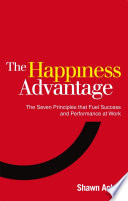

The core concept of 'The Happiness Advantage' is that happiness fuels success, not the other way around. This idea challenges the traditional belief that success leads to happiness. Shawn Achor, the author, presents research that shows how a positive mindset can enhance performance in various areas, including work, education, and health. When individuals are happy, they are more productive, creative, and resilient. This idea emphasizes that cultivating a positive outlook can lead to improved outcomes in both personal and professional life.
Continue readingAchor introduces the metaphor of the fulcrum and the lever to illustrate how our mindset can influence our ability to achieve goals. The fulcrum represents our mindset, while the lever symbolizes our potential. By shifting our mindset towards positivity, we can increase our potential for success. This concept encourages readers to recognize that they have the power to change their perspective and, consequently, their outcomes. Achor provides strategies for adjusting this fulcrum to create a more positive and productive life.
Continue readingThe Tetris Effect refers to the phenomenon where individuals become so immersed in an activity that it begins to shape their perception of reality. Achor uses this concept to illustrate how our brains can be trained to focus on positive aspects of life. By consciously practicing positive thinking, we can rewire our brains to notice opportunities and solutions rather than problems and obstacles. This idea emphasizes the importance of training our minds to see the good, which can lead to increased happiness and success.
Continue readingFalling Up is about resilience and the ability to learn from failures and setbacks. Achor argues that challenges can be reframed as opportunities for growth. By adopting a mindset that views difficulties as stepping stones, individuals can bounce back from adversity stronger than before. This concept is crucial in both personal development and professional growth, as it encourages a proactive approach to challenges and highlights the importance of perseverance.
Continue readingThe Ripple Effect illustrates how one person's positive attitude can influence those around them. Achor emphasizes that happiness is contagious; when we cultivate our own happiness, we can inspire others to do the same. This idea is particularly relevant in organizational settings, where a positive workplace culture can lead to increased morale and productivity. Achor suggests that by being a source of positivity, individuals can create a ripple effect that enhances the overall environment.
Continue readingAchor discusses the importance of social connections and relationships in fostering happiness. He argues that investing time and energy into building strong relationships can lead to greater success and well-being. This idea highlights the significance of community and support systems in achieving personal and professional goals. By prioritizing social connections, individuals can not only enhance their own happiness but also contribute to the happiness of others, creating a more supportive environment.
Continue readingThe 20-Second Rule is a practical strategy for overcoming obstacles to positive habits. Achor suggests that by reducing the activation energy required to engage in positive behaviors (e.g., exercising, reading), we can make it easier to adopt these habits. Conversely, increasing the activation energy for negative behaviors (e.g., excessive screen time) can help us avoid them. This idea provides actionable steps for individuals looking to improve their habits and overall happiness.
Continue reading